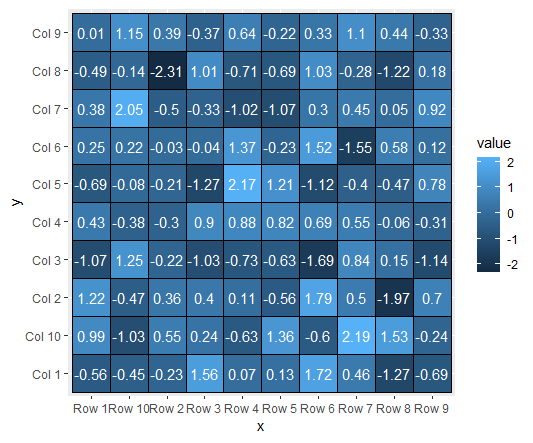Best Books on Data Science with Python, In the subject of data science, Python is one of the most extensively used programming languages.
Pandas, NumPy, scikit-learn, Matplotlib, and SciPy are just a few of the Python packages and libraries that are specifically suited for specific functions.
So, if you’re seeking the Best Books on Python for Data Science, these are the ones to look into.
The 8 Best Books on Data Science with Python are listed in this post. These books will provide you with in-depth knowledge ranging from the fundamentals to advanced topics.
Now, without spending any more time, let’s get to work on discovering the Best Books on Python for Data Science.
Best Books to Learn R Programming – Data Science Tutorials
Best Books on Data Science with Python
- Python Data Science Handbook
A computer language is required for Data Science. Python is the programming language of choice for Data Science.
As a Data Scientist, you will spend the majority of your time manipulating and cleaning data. And Pandas can help you with these duties.
This book will teach you how to use:
IPython and Jupyter are Python-based computing environments for data scientists.
For efficient storing and handling of dense data arrays in Python, NumPy contains the ndarray module.
Pandas include the DataFrame for storing and manipulating labeled/columnar data efficiently in Python.
Matplotlib is a Python library that allows for a wide range of data displays.
Scikit-Learn: provides Python implementations of the most essential and well-known machine learning algorithms that are fast and tidy.
2. Data Science from Scratch: First Principles with Python
As the title suggests, “Data Science from Scratch” is a book for novices. This book starts from the very beginning. Also, if you don’t know Python, this is a good book for you to read.
Statistics, Linear Algebra, and Probability are all required skills in Data Science. As a result, you’ll learn the fundamentals of linear algebra, statistics, and probability in this book. Additionally, you’ll learn how and when they’re employed in data science.
Programming Language is the next Data Science expertise. As a result, you’ll get a crash course in Python in this book. Knowledge of Machine Learning is the next data science skill. You will discover the principles of machine learning in this book.
Models such as k nearest neighbors, Naive Bayes, linear and logistic regression, decision trees, neural networks, and clustering will also be covered.
Data Science also necessitates knowledge of data cleaning. You will learn how to collect, explore, clean, munge, and alter data in this book.
3. Data Science Projects with Python
In this book, you’ll learn how to use industry-standard data analysis and machine-learning technologies to solve real-world challenges.
The fundamentals of pandas and Matplotlib are covered in this book. And how to use summary statistics and graphs to critically assess datasets.
You’ll also learn how to utilize lasso and ridge regression to regularise your models in this book.
You will have a firm grasp of how to apply machine learning algorithms to undertake extensive data analysis and extract useful insights from unstructured data after reading this book.
4. Python for Data Analysis: Data Wrangling with Pandas, NumPy, and IPython, 2nd Edition
This book is ideal for Python programmers who are new to data science and scientific computing, as well as analysts who are new to Python.
The first part of this book will teach you the fundamentals of Python programming. The role of Python in data analysis and statistics will next be discussed.
That is why it is suitable for Python newbies. Within a week of finishing this book, you will be able to create real-world applications.
Python for Data Analysis will also offer you an idea of what you’ll be doing when you begin working as a Data Analyst or Scientist.
In NumPy, you’ll learn both fundamental and sophisticated features (Numerical Python). You’ll also learn how to address real-world data analysis challenges with examples that are complete and precise.
5. Python For Data Science
This is a thorough introduction to Python programming for data science for novices. In this book, you’ll learn how to use Python libraries for data analysis and visualization, such as NumPy, Pandas, Matplotlib, and Seaborn.
For each course, there are practical examples and applications in this book. In a nutshell, this book is appropriate for those who are new to data science.
6. Introduction to Machine Learning with Python
This book will get you started on your Python Machine Learning journey. The essential concepts and applications of machine learning are covered in this book.
Advanced methods for model evaluation and parameter adjustment will also be covered.
Methods for working with text data, including text-specific processing techniques, are also covered in this book.
7. Python for Data Science For Dummies
For individuals who are new to data analysis, this book is a fantastic place to start. The fundamentals of Python data analysis programming and statistics are covered in this book.
You’ll also learn how to use Google Colab and statistical topics like probability, random distributions, hypothesis testing, confidence intervals, and creating prediction regression models.
8. Hands-On Machine Learning with Scikit-Learn, Keras, and TensorFlow
This book teaches you how to learn by doing it in a hands-on manner. It begins with more classic machine learning approaches (the Scikit-learn section), providing a wealth of context and practical tools for solving a wide range of issues.
The balance between theory/background and application in this book is outstanding.
This practical book demonstrates how even programmers with little or no experience with this technology may utilize simple, efficient tools to create data-driven programs.
Throughout the book, concrete examples, a little theory, and two production-ready Python frameworks—Scikit-Learn and TensorFlow—are employed.
The first section of the book covers the fundamentals of machine learning algorithms. Support Vector Machines, Decision Trees, Random Forests, and many other algorithms are available. Each of the algorithms has Scikit-learn examples provided in this book.
The second section explains deep learning ideas using the TensorFlow library.
Conclusion
You’ve uncovered the 8 Best Books on Data Science with Python in this article. Have you purchased or read any of the following books?
If you answered yes, please share your experience in the comments area.
We hope that these 8 Best Books on Data Science with Python will assist you in starting and advancing your Python Data Science journey.










